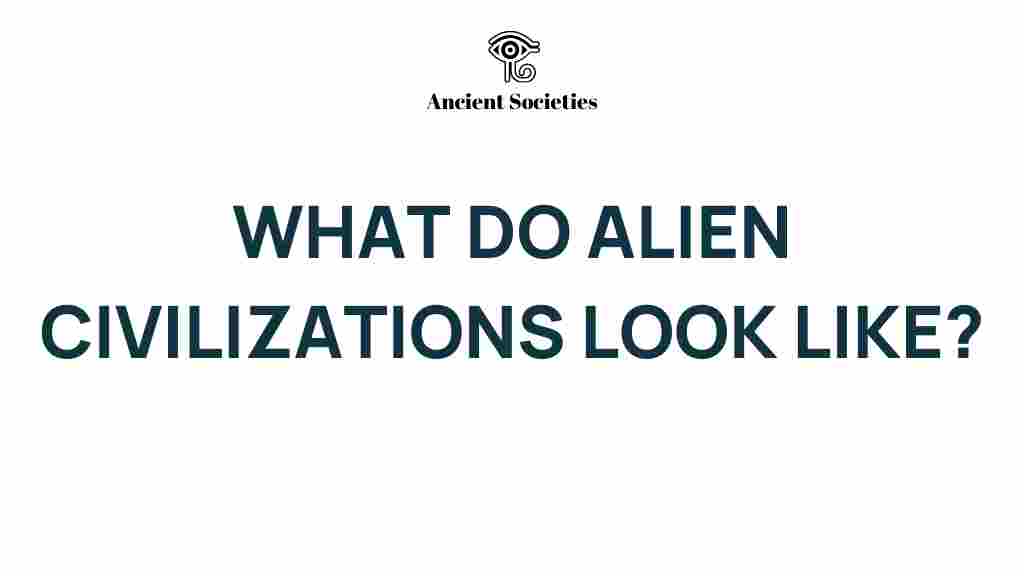What Do Alien Civilizations Look Like?
The quest to understand alien civilizations has captivated humanity for centuries. With the rise of space exploration and advancements in astrobiology, we find ourselves at the precipice of potentially discovering extraterrestrial life. But what exactly do we envision when we think of these alien civilizations? This article delves into the possibilities, drawing from science fiction, scientific theories, and our own cosmic curiosity.
The Nature of Alien Civilizations
When considering alien civilizations, we must first understand that they could vary immensely from what we know on Earth. Here are several factors that may influence their appearance, behavior, and technology:
- Biological Diversity: Life on Earth has adapted to a myriad of environments. Similarly, alien life could be shaped by their planet’s conditions.
- Technological Advancement: The level of technology in a civilization can influence how they interact with their environment and each other.
- Social Structures: Just as human societies range from communal to hierarchical, alien civilizations might have unique societal constructs.
- Communication Methods: Interstellar communication may take forms we can’t yet comprehend, including telepathy or advanced AI.
Astrobiology: Understanding Life Beyond Earth
Astrobiology is the study of life in the universe, encompassing the search for extraterrestrial life forms and the conditions that support them. Scientists propose that alien civilizations could emerge in various environments, such as:
- Moons with Subsurface Oceans: Places like Europa or Enceladus may harbor life beneath their icy crusts.
- Exoplanets in the Habitable Zone: Planets located in the ‘Goldilocks zone’ around stars could support life similar to Earth.
- Extreme Environments: Life may thrive in extremes, such as the high temperatures of Venus or the freezing conditions of Mars.
Science Fiction Inspirations
Science fiction has played a significant role in shaping our understanding of what alien civilizations might look like. From the insect-like aliens in Starship Troopers to the benevolent beings in Contact, these portrayals spark our imagination. Some common themes in science fiction include:
- Physical Appearance: Creatures can range from humanoid to entirely unique forms, such as amorphous blobs or silicon-based life.
- Cultural Depictions: Many stories explore the complexity of alien cultures, their conflicts, and their philosophies.
- Advanced Technologies: Sci-fi often emphasizes hyper-advanced technologies, from warp drives to teleportation.
Exploring the Universe: The Role of Space Exploration
Space exploration is crucial in our quest to uncover the mysteries of the universe. With missions to Mars, the study of exoplanets, and the search for biosignatures, we are closer than ever to discovering alien civilizations. Current and future initiatives include:
- The James Webb Space Telescope: This powerful telescope will help us study distant planets and their atmospheres for signs of life.
- Mars Rovers: Ongoing missions aim to analyze Mars’ soil and atmosphere for potential signs of past life.
- SETI (Search for Extraterrestrial Intelligence): This initiative listens for signals from alien civilizations, hoping to establish interstellar communication.
Cosmic Curiosity: The Search for Signs of Life
Humanity’s cosmic curiosity drives our search for signs of extraterrestrial life. Researchers utilize various methods to detect potential alien civilizations:
- Radio Signals: Monitoring for unusual radio waves from space can help identify possible communications from alien civilizations.
- Optical SETI: This approach looks for laser pulses that could indicate advanced technology.
- Astrobiological Markers: Scientists search for biosignatures, such as methane or oxygen, in the atmospheres of exoplanets.
Challenges in Understanding Alien Civilizations
Despite our advancements, several challenges complicate our understanding of alien civilizations:
- Distance: The vastness of space means that even if we detect signals, they may be from civilizations that are light-years away.
- Different Life Forms: Life on other planets may not resemble what we expect based on Earthly norms.
- Technological Limitations: Our current technology may not be sufficient to detect or interpret signs of alien life.
Interstellar Communication: The Future of Contact
If we were to encounter an alien civilization, how would we communicate? The potential methods for interstellar communication could include:
- Mathematics: As a universal language, mathematics could be the foundation for initial contact.
- Visual Signals: Using lights or symbols to convey messages could bridge communication gaps.
- Artificial Intelligence: AI might translate and facilitate communication between species.
Cosmic Curiosity and the Future of Astrobiology
The future of astrobiology holds great promise. As technology advances, we will gain deeper insights into the possibility of alien civilizations. Here are some areas of focus for future research:
- Advanced Telescopes: Next-generation telescopes will allow for more in-depth analysis of exoplanets and their atmospheres.
- Sample Return Missions: Missions to collect samples from other planets and moons could provide direct evidence of life.
- International Collaboration: Global cooperation in space exploration could accelerate our understanding of the universe.
Conclusion: Embracing the Unknown
The question of what alien civilizations look like remains one of the universe’s greatest mysteries. With our expanding knowledge of astrobiology, space exploration, and the insights from science fiction, we are gradually piecing together the puzzle. As we continue to explore the cosmos, our cosmic curiosity fuels the hope of discovering extraterrestrial life. Each new discovery brings us closer to unveiling the unknown and answering the age-old question: are we alone in the universe?
For more information on the search for alien life, you can visit NASA’s Astrobiology website.
Stay curious and keep looking to the stars!
This article is in the category Empires and created by AncientSocieties Team
